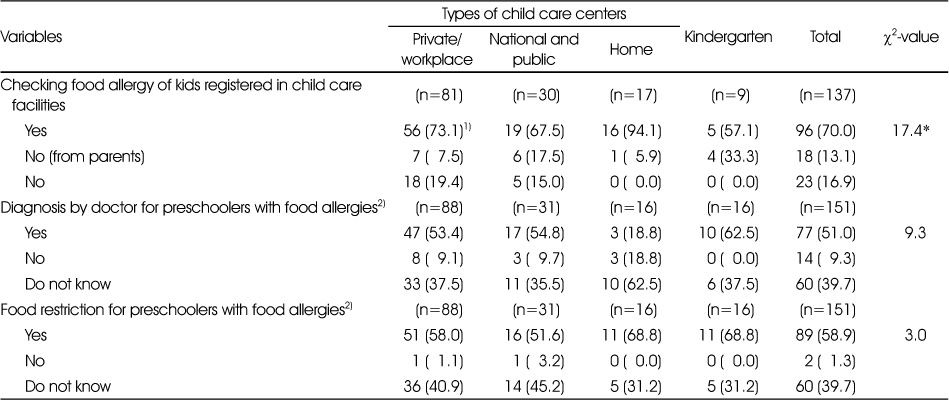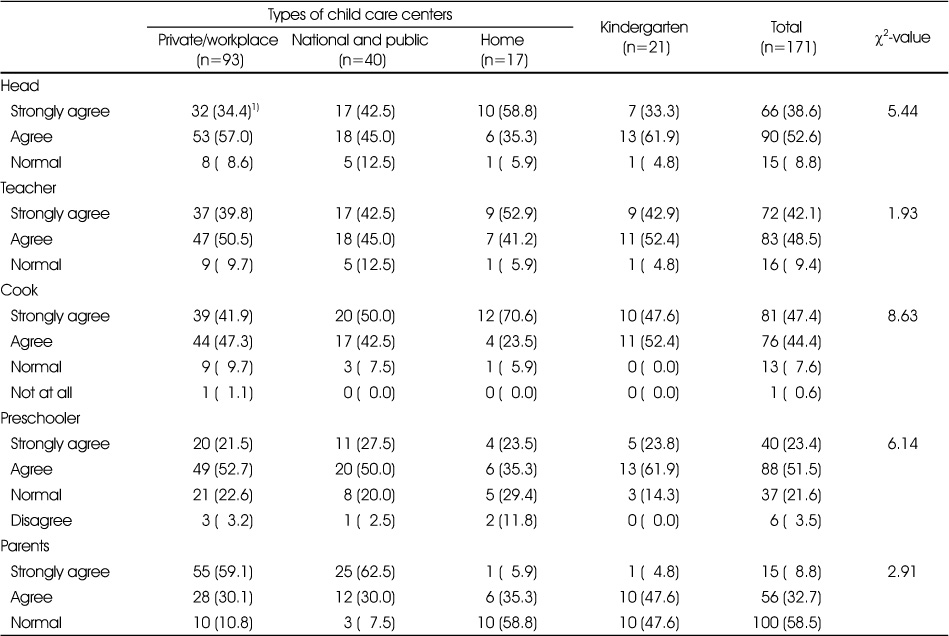References
1. Kay AB. T Cells orchestrators of the asthmatic response. Ciba Found Symp 1997;206:56–67.
3. Sicherer SH, Sampson HA. Food allergy. J Allergy Clin Immunol 2010;1252 Suppl. :116–125.
4. Chung SJ, Han YS, Chung SW, Ahn KM, Park HY, Lee SI. Marasmus and kwashiorkor by nutritional ignorance related to vegetarian diet and infants with atopic dermatitis in South Korea. Korean J Nutr 2004;37(7):540–549.
5. Han YS. Management of food allergy in the community. Food Sci Ind 2015;48(1):24–31.
6. Lim DH. Epidemiology of anaphylaxis in Korean children. Korean J Pediatr 2008;51(4):351–354.
7. Jang GC, Chang YS, Choi SH, Song WJ, Lee SY, Park HS. Overview of anaphylaxis in Korea: diagnosis and management. Allergy Asthma Respir Dis 2013;1(3):181–196.
8. Lee SY, Kim KW, Lee HH, Lim DH, Chung HL, Kim SW. Incidence and clinical characteristics of pediatric emergency department visits of children with severe food allergy. Korean J Asthma Allergy Clin Immunol 2012;32(3):169–175.
9. Allen KJ, Hill DJ, Heine RG. 4. Food allergy in childhood. Med J Aust 2006;185(7):394–400.
10. Seo WH, Jang EY, Han YS, Ahn KM, Jung JT. Management of food allergies in young children at a child care center and hospital in Korean. Pediatr Allergy Respir Dis 2011;21(1):32–38.
11. Lee AH, Kim KE, Lee KE, Kim SH, Wang TW, Kim KW. Prevalence of food allergy and perceptions on food allergen labeling in school foodservice among Korean students. Allergy Asthma Respir Dis 2013;1(3):227–234.
12. Kim YG, Yu KH, Ly SY. Perception of elementary school parents in Gyeongbuk area on allergenic food labeling system and children's food allergy status. Korean J Hum Ecol 2013;22(5):491–506.
13. Lee HS, Hong SC, Kim JH, Kim JW, Lee KH, Lee JC. Prevalence of food allergy and the sensitization rates of food allergens in school-aged children in Jeju. Korean Public Health Res 2014;40(3):49–58.
14. Won JH. A study on the awareness and management of food allergy among nutritionist and nutrition teachers in elementary and high schools in Seoul. [master's thesis] Sookmyung Women's University; 2015.
15. Kim HI. Research methods in sampling 1st edth ed. Paju: Kyungmoonsa; 2014. p. 9.
16. Jung YH, Ko H, Kim HY, Seo JH, Kwon JW, Kim BJ. Prevalence and risk factors of food allergy in preschool children in Seoul. Korean J Asthma Allergy Clin Immunol 2011;31(3):177–183.
17. Lim Y, Oh SY. Development of a semi-quantitative food frequency questionnaire for pre-school children in Korea. Korean J Community Nutr 2002;7(1):58–66.
18. Lee Y, Kim HH, Ko YS. Perception on food allergy labelling and management of nutritional education among higher grade elementary school students in Jeju area. J Nutr Health 2015;48(6):530–541.
19. Kim YM, Heo YR, Ro HK. Perception and practices regarding food allergy of elementary and middle school nutritionists in the Jeonnam area. Korean J Society Food Sci Nutr 2014;43(1):151–161.
20. Yoon AR. A study on the state of food allergy management nutritionists and nutrition teacher in elemetary and middle schools. [master's thesis] Inha University; 2015.
21. Christie L, Hine RJ, Parker JG, Burks W. Food allergies in children affect nutrient intake and growth. J Am Diet Assoc 2002;102(11):1648–1651.
22. Ahn K. Food allergy: diagnosis and management. Korean J Asthma Allergy Clin Immunol 2011;31(3):163–169.
23. Kim SB, Kim JH. Food allergy awareness and nutritional management by the parents of preschool children. Korean J Community Nutr 2016;21(5):426–439.
24. Han YS, Chung SJ, Cho YY, Choi HM, Ahn KM, Lee SL. Analysis of the rate of sensitization to food allergen in children with atopic dermatitis. Korean J Community Nutr 2004;9(1):90–97.
26. Urisu A, Ebisawa M, Ito K, Aihara Y, Ito S, Mayumi M. Japanese guideline for food allergy 2014. Allergol Int 2014;63(3):399–419.
27. Food Allergy Research & Education, Inc. About food allergy [internet] Food Allergy & Anaphylaxis Network (FAAN) and the Food Allergy Initiative (FAI); 2015. cited 2015 Nov 7. Available from:
http://www.foodallergy.org/mostpopular-resources.
28. Centers for Disease Control and Prevention. Voluntary guidelines for managing food allergies in schools and early care and education programs Washington, DC: US Department of Health and Human Services; 2013.







